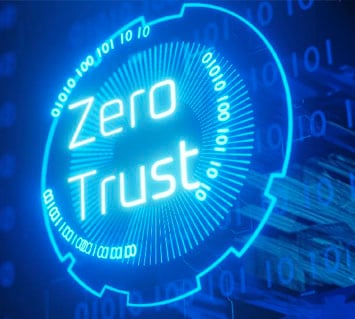By Mike French | November 29, 2024
The physical security landscape is constantly evolving. Today, the main drivers of change are emerging technologies, shifting regulations, and new threats emerging from converged physical and network security environments.
- Taking a Holistic Security Approach
- Tailored Security Solutions for Every Industry
- Advanced Cybersecurity for Physical Security Systems
- Hybrid Security Models: The Future of Human and AI Collaboration
- Better Physical Security with IoT and Wireless Technology
- Strengthening Cybersecurity
- A Transformative Role for AI and Automation in Physical Security
- Sustainability in Security: Merging Environmental and Operational Safety
- Embracing Next-Gen Security Practices in 2025 and Beyond
Your physical security strategies will need to adapt to meet these challenges. Security professionals and the organizations they work for need to understand these drivers to maintain efficient physical security operations in 2025 and beyond. Organizations at every level, from federal to local, are analyzing what is out there.
In this article, we’ll explore key trends set to define physical security in 2025 and provide insights into how you can stay resilient and secure in the face of rapid change.

Taking a Holistic Security Approach
In 2025, physical and digital security convergence will be at the forefront of business security strategies. Traditional measures such as access control systems, CCTV, and on-site patrols seamlessly merge with advanced digital tools like cybersecurity protocols and AI-driven threat detection. This integration creates a holistic security framework that enables real-time responses, improves threat intelligence, and simplifies overall security management. A holistic approach ensures a comprehensive plan to safeguard assets, people, and operations in increasingly complex environments.

Tailored Security Solutions for Every Industry
Every industry faces unique security challenges that require specialized solutions. For example, healthcare organizations often prioritize advanced encryption and strict access controls to safeguard sensitive patient data and ensure compliance with HIPAA regulations. Meanwhile, financial institutions emphasize robust cybersecurity measures to counter sophisticated threats targeting monetary transactions and customer data.
2025 will see an even further refinement of industry-specific security strategies. By aligning strategies with their industry's specific demands and compliance requirements, businesses can achieve more effective protection.

Advanced Cybersecurity for Physical Security Systems
Advances in encryption, automated threat detection, and continuous monitoring have made cloud platforms more resilient to cyberattacks. These improvements help organizations adapt to shifting threat landscapes while maintaining secure access to critical data and applications.
Cloud providers have enhanced their security offerings with built-in protections like AI-driven threat analytics and compliance management tools, ensuring that sensitive information remains safeguarded. Multi-factor authentication (MFA), end-to-end encryption, and zero trust architecture are standard features in leading cloud platforms.
By leveraging these modern cloud security solutions, organizations can improve their readiness for potential attacks while ensuring operational continuity and regulatory compliance. Regular training, proactive risk assessments, and adopting best practices further strengthen their ability to mitigate cybersecurity threats effectively.

Hybrid Security Models:
The Future of Human and AI Collaboration
The future of security lies in hybrid models that combine the strengths of human expertise with advanced, technology-driven solutions. This trend will accelerate in 2025. Security guards now collaborate with AI-powered surveillance, automated monitoring tools, and other cutting-edge systems to create more robust and responsive security programs.
Routine tasks such as perimeter monitoring and access logging are handled by automated systems, allowing security personnel to focus on more critical, high-priority incidents. AI-enhanced surveillance tools monitor larger areas and multiple points simultaneously, reducing the need for additional personnel while increasing overall vigilance.
Automated alerts from smart systems notify guards immediately of potential threats, enabling faster, more effective responses to critical incidents. With real-time data and predictive analytics, hybrid models allow organizations to anticipate and address vulnerabilities before they escalate.

Better Physical Security with IoT and Wireless Technology
The integration of wireless technology and IoT (Internet of Things) has revolutionized security technology, making physical security systems smarter, more responsive, and highly versatile. Modern systems now leverage IoT to enhance communication, enable remote monitoring, and deliver real-time alerts, offering new flexibility and coverage for security solutions.
In 2025, security personnel will increasingly monitor their systems through mobile devices so they can receive instant alerts, view live video feeds, and respond to threats from anywhere. This will improve both efficiency and response times. IoT-enabled systems collect and analyze intrusion data, uncovering patterns and vulnerabilities. This information helps organizations refine their security strategies and implement targeted improvements for threat prevention.
Wireless IoT integration enables seamless communication between devices, ensuring that alarms, sensors, and monitoring systems work cohesively to provide a comprehensive security network. IoT connectivity simplifies the process of expanding or modifying existing security systems, making it easier to adapt to evolving needs.

Ready to elevate your physical security strategies for 2025 and beyond?
Discover actionable insights and expert guidance to start building a world-class security program.
Strengthening Cybersecurity
The integration of physical and digital security is no longer optional—it’s essential. Modern physical security solutions heavily rely on networked technologies, such as surveillance cameras, access control systems, and smart lockers. However, if left unprotected, these same systems can become entry points for cyberattacks. As ransomware attacks targeting physical security systems increase, safeguarding these technologies will be a top priority in 2025. Disruptions caused by such attacks can compromise sensitive data and critical operations, underscoring the need for robust defenses.
Moving Toward a Zero-Trust Framework
Adopting a zero-trust security model will be a critical strategy for modern organizations. Under this approach, no user, device, or system is trusted by default, even within the same network. Every access request is treated as potentially compromised. It must be verified independently, reducing the risk of lateral movement by attackers and ensuring consistent protection across both physical and digital environments.

Educating Employees on Cybersecurity Risks
Cybersecurity must extend beyond the IT department. Organizations will need to invest in comprehensive employee training programs to address potential vulnerabilities caused by human error. By raising awareness about cyber risks, best practices, and individual responsibilities, businesses can foster a proactive culture of security.
Learn More: How to Design Better Physical Security Training Programs

A Transformative Role for AI and Automation in Physical Security
Proactive Threat Detection with AI
AI is revolutionizing physical security by leveraging predictive analytics to identify potential threats. AI-powered machine learning algorithms can detect unusual activity, forecast security breaches, and highlight potential safety risks. This enables organizations to address vulnerabilities before incidents occur, reducing overall risk.
Automation Enhances Access Control
Automation technologies are streamlining access control processes, offering both improved security and user convenience. Advanced systems employing facial recognition, fingerprint scans, and behavioral biometrics are rapidly replacing traditional access cards and PIN codes. These systems not only increase security but also make access faster and more seamless for employees and visitors.
Smart Asset Tracking with AI and IoT
Asset tracking is critical to operational security for industries such as healthcare, logistics, and manufacturing. AI-driven solutions, integrated with IoT networks, automate the process of monitoring and locating valuable equipment. These technologies ensure real-time tracking, reducing losses and improving efficiency in managing high-value assets.
Sustainability in Security: Merging Environmental and Operational Safety
The scope of physical security is expanding to include safeguarding operations against environmental risks while contributing to global sustainability efforts. In 2025, several key trends are expected to shape how organizations integrate environmental considerations into their security strategies.
Environmental Monitoring
The integration of environmental sensors into physical security systems is becoming standard practice. These sensors provide real-time data on critical environmental factors such as air quality, temperature, humidity, and seismic activity. This information not only enhances the safety and well-being of personnel but also helps protect valuable assets by enabling proactive responses to environmental changes.
Emergency Preparedness for Environmental Risks
Organizations are prioritizing robust emergency preparedness plans tailored to environmental challenges. Strategies now include detailed evacuation protocols for natural disasters like floods, earthquakes, and wildfires and contingency plans for extreme weather events. This proactive approach ensures businesses can maintain operational continuity while prioritizing employee safety.
Sustainable Security Solutions
Businesses are increasingly adopting eco-friendly practices within their security frameworks. This includes using energy-efficient technologies, such as solar-powered cameras and LED lighting in surveillance systems, and incorporating recycled materials into physical infrastructure. These measures align with broader corporate sustainability goals and reduce the carbon footprint of security operations.
As environmental risks continue to grow, organizations must adopt a dual approach: protecting their operations from environmental threats while minimizing their environmental impact.
Embracing Next-Gen Security Practices in 2025 and Beyond
The rapid evolution of security technology is paving the way for transformative physical security practices. At Real Time Networks, we foresee exciting opportunities alongside complex challenges for security teams in the coming years.
Navigating this new landscape can be daunting. Collaborate with a trusted security and systems provider instead of tackling it all on your own. The right partner can help identify and implement smart automation solutions tailored to your organization. By streamlining operations and enhancing protection measures, you’ll be better positioned to safeguard your workforce, maintain operational integrity, and stay competitive in 2025 and beyond
Make Your Physical Security Stronger With a Smart Asset Management System.
See how a smart asset management system can streamline operations, minimize vulnerabilities, and protect your assets and facilities in real-time.
Subscribe to our blog
Mike French
CEO at Real Time Networks




